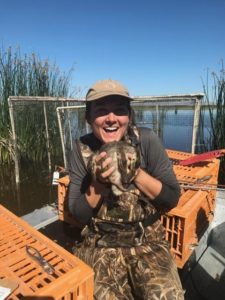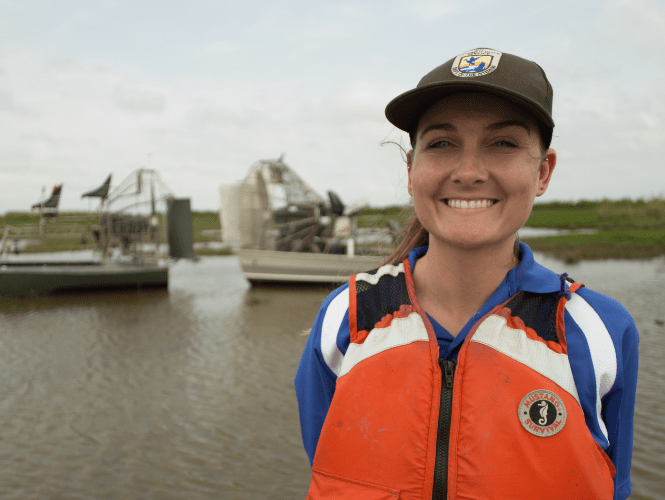A new pair of boots on the ground in the Tampa Bay region promises enhanced partnerships with local governments as well as organizations like Florida Audubon.
Tiffany Lane, the new biologist for the U.S. Fish and Wildlife Service’s (FWS) Coastal Program, is based in Tampa Bay rather than working from the service’s regional office in Jacksonville. “Over 70% of the work done from Jacksonville is done in Tampa,” said Nicole Adimey, who oversees the Coastal Program from Atlanta. “It just makes sense to have someone there rather than driving back and forth.”
The FWS Coastal Program works in 24 priority coasts across the U.S. specifically to develop partnerships that provide technical and financial assistance for landscape-wide habitat conservation projects.
“I’m here to provide technical as well as financial assistance, and to build partnerships with private non-profit groups, local governments and the water management district,” Lane said. “Our primary goal is the protection of threatened and endangered species and I’m willing to look at any project proposal for coastal habitats.”
Those habitats, in the case of Tampa Bay, extend further inland than they might in other states, she adds. “With sea-level rise, we need to increase coastal resilience and that means we need to move inland and look at protecting and conserving those freshwater wetlands.”
A native of Riverview, Lane originally thought she needed to leave her hometown to further her career and ended up working in South Dakota and Texas before returning to Tampa Bay. She earned an undergraduate degree in wildlife ecology and conservation from the University of Florida and then an MS from Texas Tech University specializing in waterfowl habitat selection.

Some of Lane’s work in Texas included conserving coastal marshes and finding beneficial uses for dredged materials. That experience, including research on how elevations can impact the success or failure of restoration projects, may come in handy in Tampa Bay as islands and shorelines continue to erode. She has a special affinity for shorebirds like endangered plovers and red knots, and worked with piping plovers in South Dakota where they nest before migrating south and spending winters on beaches in Florida.
Now that she’s back in Tampa Bay, she’s actively looking for people and projects FWS can support. “I really want to build partnerships with the people and organizations that already are accomplishing so much like the Tampa Bay and Sarasota Bay estuary programs,” she said.
She’s also reaching out to Audubon staff and volunteers to support its diverse initiatives in Tampa Bay. Florida Coastal Islands Sanctuaries owns and manages islands where colonial waterbirds nest, including at least a dozen species listed as endangered or threatened. Project Colony Watch helps protect threatened wood storks nesting on islands in suburban retention ponds.

Another push will focus on endangered plants including the Florida golden aster, which grows in open sunny areas that are also highly favored by developers, and the aboriginal prickly-apple cactus that thrives on shell middens left by indigenous peoples. “We’re working with Selby Gardens to reintroduce the aboriginal cactus because their preferred habitat is shrinking or gone. We need to know what they need to survive,” she said.
If you’re working on a project involving endangered or threatened species, you can reach Lane at tiffany_lane@fws.gov or 904-731-3116.
